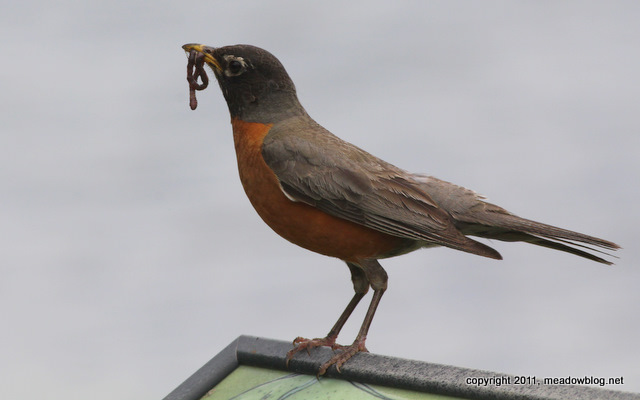
Photographed near the Marsh Discovery Trail last week with baited breath.
More on the Diet of Worms here.


Photographed near the Marsh Discovery Trail last week with baited breath.
More on the Diet of Worms here.
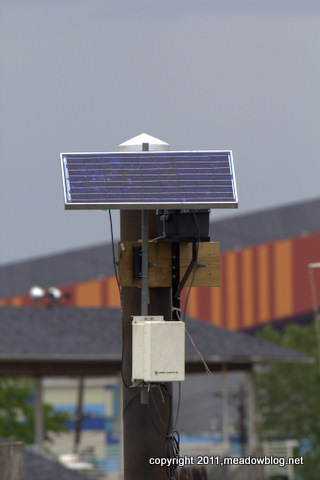 When you're on the Hackensack River, from time to time you'll see one of these solar-powered monitoring stations.
When you're on the Hackensack River, from time to time you'll see one of these solar-powered monitoring stations.
These stations monitor the river's water quality and upload the data onto the Internet, where anyone in the world with an Internet connection can check on the health of the estuary.
MERI now continually takes the river’s pulse year-round through these monitoring stations, located at four sites along the Hackensack.
MERI tracks dissolved oxygen, water turbidity (how cloudy the water is), temperature, salinity and acidity.
The data provide a fuller picture of the water conditions. High water temperatures, for example, affect dissolved-oxygen levels and can kill fish.
To access the current data from any of MERI's water-quality monitoring stations, click here.
Mike Gempp reports:
"There were two skimmers working the east end of the Teal Pool at 6:30 this [Thursday] evening. They worked the area for about ten minutes. It was cloudy and gray, so maybe that's what brought them out early."
(Thanks, Mike.)
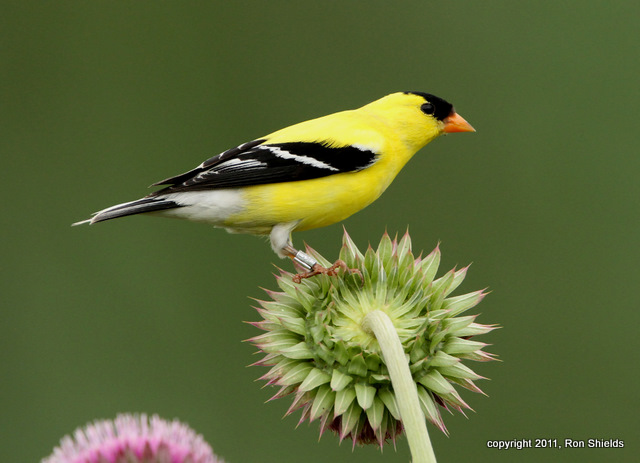 Ron Shields took this photo of New Jersey's state bird earlier this week by
Ron Shields took this photo of New Jersey's state bird earlier this week by 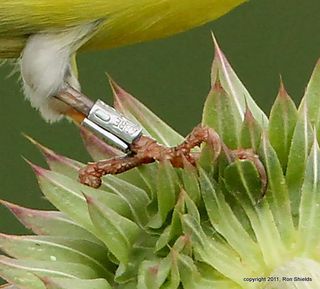 the Carillon Disposal Road and, lo and behold, it was banded.
the Carillon Disposal Road and, lo and behold, it was banded.
We figured it was one of the birds that NJMC Naturalist Mike Newhouse and his crew banded by the nearby Erie Landfill, but we figured wrong.
All we can make out on the band are the letters "ABRE." We are trying to discern what that stands for.
Anybody help out? (Thanks, Ron!)
Mike Gempp reports:
Disposal Road: Brown-headed Cowbirds, nesting Eastern Kingbirds, a pair of nesting Orchard Orioles, at least one Baltimore Oriole, Killdeer by the dozen, and a few Spotted Sandpipers roaming the hillside.
The highlight of the afternoon was seeing a family of pheasants strutting along the hillside. I saw the male first, all lit up in the sun, and then started seeing the babies, and then Mom. There were eleven birds all told.
DeKorte: Indigo Bunting, plenty of Goldfinches, a Song Sparrow, a pair of Cardinals, a Black Crowned Night Heron, and the usual cast of characters. Marsh Wrens, Osprey and baby ducks abound, and Egrets continue to be scarce.
(Thanks, Mike!)
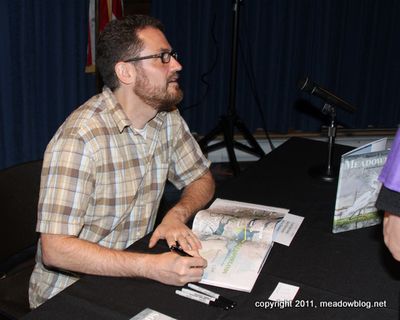 Jim Wright, who keeps this blog, also writes a nature column every other week for The South Bergenite. Here is his latest column –on 'Meadowlands' author Tom Yezerski.
Jim Wright, who keeps this blog, also writes a nature column every other week for The South Bergenite. Here is his latest column –on 'Meadowlands' author Tom Yezerski.
A great way to see something in an entirely new light is through an artist’s eyes, and no better example of this can be found than “Meadowlands,” a charming new children’s book by former Rutherford resident Thomas F. Yezerski.
The all-color, richly illustrated book, which has received rave reviews from the likes of The New York Times, tells the story of the Meadowlands District from the time of the Lenapes to present day.
The subtitle of the book is “A Wetlands Survival Story,” and that certainly is what it is. The Meadowlands is in the midst of an amazing environmental recovery, but to appreciate how far we’ve come, we have to look back at where we’ve been.
Yezerski’s ability to encapsulate that story in 32 pages – in a fashion that will fascinate kids and adults alike — is testament to his abilities as both writer and artist.
Rest of the column follows.
The Belleville Patch has a neat feature on a recent NJMC canoe trip, led by Naturalist Gabrielle Bennett-Meany. The students' comments alone are worth the look.
Link is here.